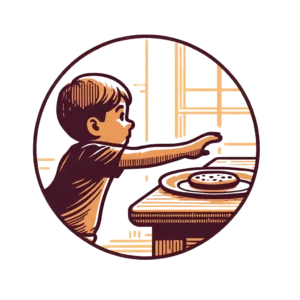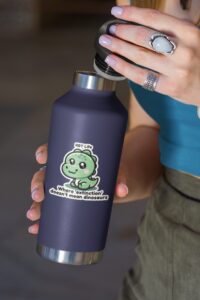Shaping
Table of Contents
Welcome back to our RBT Competency Assessment blog post series! This post will cover task number 9 on the RBT competency assessment: shaping. In this series, we are exploring each task on the RBT Competency Assessment to help new Behavior Technicians (BTs) prepare for their initial competency assessments and provide a valuable refresher for Registered Behavior Technicians (RBTs) renewing their certification.
Shaping is a powerful teaching technique in the field of Applied Behavior Analysis (ABA) that involves gradually modifying an existing behavior into a desired behavior by reinforcing successive approximations of the target behavior. This method is particularly effective for teaching new skills and behaviors that a learner may not readily exhibit. By systematically reinforcing closer and closer approximations of the desired behavior, shaping helps learners make gradual progress toward achieving specific goals.
In this blog post, we will cover what shaping is, why it is important, and how it is used in ABA. We will explore the step-by-step process of shaping and provide a detailed example of using shaping to teach a child to mand (request) for bubbles. By understanding and mastering shaping techniques, RBTs can significantly enhance their ability to teach new behaviors and promote greater independence in their clients. Let’s begin by defining shaping and discussing its role and significance in ABA.
What is Shaping?
Definition and Explanation:
Shaping is a technique used in Applied Behavior Analysis (ABA) that involves gradually modifying an existing behavior into a desired behavior by reinforcing successive approximations of the target behavior. This method allows learners to achieve complex behaviors that they may not exhibit naturally by systematically reinforcing closer and closer approximations to the desired behavior.
Role in ABA:
In ABA, shaping plays a crucial role in skill acquisition. It is used to teach new behaviors by breaking down the desired behavior into smaller, manageable steps. Each step is reinforced until the learner masters it, and then the reinforcement criteria are gradually increased to shape the behavior toward the ultimate goal. This process helps learners develop new skills and behaviors in a structured and supportive manner.
Importance of Shaping in Skill Acquisition:
Shaping is particularly important because it provides a clear and systematic approach to teaching new behaviors. It allows for individualized instruction tailored to the learner’s current abilities and progresses at a pace that ensures success and minimizes frustration. Shaping is used to teach a wide range of skills, from basic motor movements to complex social interactions.

Why is Shaping Important?
Benefits of Using Shaping Techniques:
- Promotes Skill Development: Shaping is effective for teaching new behaviors that the learner may not exhibit naturally, promoting the development of new skills.
- Increases Motivation: By providing frequent reinforcement for successive approximations, shaping helps maintain the learner’s motivation and engagement throughout the learning process.
- Reduces Frustration: Shaping allows learners to experience success at each step, reducing frustration and building confidence as they progress toward the target behavior.
- Individualized Instruction: Shaping can be tailored to the learner’s current skill level and pace of learning, ensuring that instruction is individualized and effective.
How Shaping Aids in Learning and Behavior Change:
- Step-by-Step Mastery: Shaping breaks down complex behaviors into smaller steps, allowing learners to master each component before moving on to the next.
- Reinforcement of Successive Approximations: Each step in the shaping process is reinforced, encouraging the learner to continue progressing toward the target behavior.
- Flexibility and Adaptability: Shaping can be adapted to fit the unique needs and abilities of each learner, making it a versatile and effective teaching technique.
Impact on Client Progress and Independence: Shaping techniques lead to significant improvements in the learner’s ability to acquire new skills and perform desired behaviors independently. By reinforcing successive approximations, learners gradually build the necessary skills to achieve their goals. This increased independence enhances the learner’s quality of life and reduces their reliance on caregivers for daily activities. Additionally, the skills learned through shaping can be generalized to other contexts and tasks, further promoting autonomy and self-sufficiency.
How Shaping Differs from Chaining
While shaping involves reinforcing successive approximations of a single behavior, chaining is a technique used to teach a complex behavior that consists of multiple, discrete steps. In chaining, each step in the sequence is taught and reinforced until the learner can perform the entire chain independently. Shaping focuses on gradually modifying a single behavior, while chaining involves teaching a sequence of behaviors that form a complete task.
How Shaping is Used in ABA
Detailed Explanation of the Shaping Process:
Shaping in Applied Behavior Analysis (ABA) involves systematically reinforcing successive approximations of a target behavior. The process begins by identifying a behavior that the learner already exhibits, which can be incrementally shaped into the desired behavior. The therapist reinforces closer and closer approximations of the target behavior until the learner can perform the behavior independently.
Steps to Implement Shaping in ABA:
- Define the Target Behavior: Clearly identify and define the final behavior you want the learner to perform.
- Identify the Starting Behavior: Determine the existing behavior that is closest to the target behavior and that the learner can already perform.
- Establish Successive Approximations: Break down the target behavior into smaller, manageable steps that lead from the starting behavior to the target behavior.
- Reinforce Successive Approximations: Provide reinforcement for behaviors that are closer to the target behavior. Gradually require closer approximations to the target behavior for reinforcement.
- Monitor and Adjust: Continuously monitor the learner’s progress and adjust the criteria for reinforcement as needed to ensure the learner is making progress toward the target behavior.
Example of Shaping: Manding for Bubbles
To illustrate how shaping can be used in ABA, let’s consider an example where the goal is to teach a child to mand (request) for bubbles. The shaping process will involve reinforcing successive approximations of the desired behavior (saying “bubbles”).
Step-by-Step Shaping Process for Manding for Bubbles:
Initial Behavior:
- Starting Point: The child shows interest in bubbles by reaching for them or looking at them.
- Reinforcement: Reinforce any indication of interest in the bubbles by providing bubbles paired with verbal acknowledgment like “You want the bubbles!”
Simple Vocalization:
- Approximation: Next, reinforce any sounds or babbles the child makes when they show interest in the bubbles.
- Reinforcement: Encourage any vocalization, such as “Mm?” or any effort to vocalize, with positive reinforcement like “Yes, bubbles!” and providing bubbles.
Specific Sounds:
- Approximation: Reinforce closer approximations to the target word, such as the child making the “b” or “bu” sound when they express a desire for bubbles.
- Reinforcement: Encourage these attempts with reinforcement like “That’s right, ‘bu’ for bubbles!” while providing bubbles.
Partial Word:
- Approximation: Reinforce the child for using part of the word, like “bub” or “buhbuh.”
- Reinforcement: Provide positive reinforcement, such as saying “‘Bub’ means bubbles!” while providing bubbles.
Whole Word:
- Approximation: Finally, reinforce the use of the full word “bubbles” when the child wants them.
- Reinforcement: When the child clearly says “bubbles,” they receive the bubbles along with enthusiastic praise, “Yes! Bubbles! Great asking!”
This shaping process gradually guides the child from a simple interest in bubbles to the clear verbal request of the word “bubbles,” reinforcing each step toward the desired behavior. Depending on the child’s developmental level and learning pace, the duration of this process can vary significantly.
By understanding and implementing the shaping process, RBTs can effectively teach new behaviors and skills, helping their clients achieve greater independence and improved communication.
When to Use Shaping
Situations Best Suited for Shaping:
Shaping is particularly effective in a variety of scenarios, especially when teaching new behaviors that the learner does not currently exhibit or exhibits very rarely. Here are some situations where shaping is most beneficial:
Teaching Complex Behaviors:
- When a behavior is too complex to be learned all at once, shaping helps break it down into manageable steps. Each step is reinforced until the learner masters it, gradually building up to the full behavior.
Increasing Frequency of a Behavior:
- For behaviors that occur infrequently, shaping can be used to increase their frequency. By reinforcing successive approximations, the desired behavior becomes more common.
Developing New Skills:
- Shaping is ideal for teaching new skills that the learner has not yet developed. This can include communication skills, social interactions, academic tasks, and self-help skills.
Addressing Behavioral Deficits:
- When a learner has a deficit in a particular area, shaping can be used to systematically build the desired behavior, providing reinforcement for incremental progress.
Scenarios Where Shaping is Most Effective:
- Communication Skills: Shaping is often used to teach verbal behavior, such as manding (requesting), tacting (labeling), and echoics (repeating). For example, teaching a child to request items or activities through verbal approximations.
- Motor Skills: Shaping can be applied to develop fine and gross motor skills, such as writing, tying shoes, or using utensils.
- Academic Skills: In educational settings, shaping is useful for teaching academic tasks, such as reading, writing, and math skills, by reinforcing each step of the learning process.
- Self-Help Skills: Shaping is beneficial for teaching self-help and daily living skills, such as dressing, brushing teeth, or making a bed.
Tips for Identifying When Shaping is Appropriate:
- Behavior is Rare or Nonexistent: If the learner rarely or never exhibits the target behavior, shaping is likely needed to build the behavior from scratch.
- Behavior Needs Refinement: If the learner exhibits a behavior that is close to the target behavior but not quite there, shaping can help refine and perfect the behavior.
- Complex Tasks: For tasks that are too complex to be taught in one step, shaping allows for gradual learning and reinforcement of each component.
- Motivation and Engagement: Shaping is particularly effective when the learner is motivated and engaged, as frequent reinforcement helps maintain their interest and commitment to the learning process.
By recognizing when shaping is the most appropriate teaching method, RBTs can effectively promote learning and skill acquisition in their clients. Understanding the specific contexts and scenarios where shaping excels allows practitioners to make informed decisions and tailor their teaching strategies to meet the unique needs of each learner.
FAQ on Shaping in ABA
The following FAQ section consists of the four most Googled questions on the topic of shaping techniques.
- Q: What is shaping in ABA examples?
- A: Shaping in ABA involves reinforcing successive approximations of a desired behavior. For example, if a child is learning to say “bubbles,” the therapist might reinforce any vocalization initially, then reinforce closer sounds like “bu” and “bub,” until the child can say the full word “bubbles.”
- Q:What are examples of shaping process?
- A: Examples of the shaping process include teaching a child to hold a paintbrush by reinforcing steps such as touching the brush, grasping it with a fist, and finally holding it correctly with fingers around the handle. Each step is reinforced until mastery before moving on to the next.
- Q: What is shaping vs chaining?
- A: Shaping involves reinforcing successive approximations of a single behavior, while chaining involves teaching a complex behavior by breaking it down into smaller steps and linking them together. Shaping focuses on modifying one behavior, whereas chaining teaches a sequence of behaviors.
- Q: What are shaping methods?
- A: Shaping methods include differential reinforcement of successive approximations, starting with reinforcing any behavior that resembles the target behavior and gradually requiring closer approximations for reinforcement. This process continues until the desired behavior is achieved.
Final Thoughts
Shaping techniques are essential tools in Applied Behavior Analysis (ABA) for teaching new behaviors by reinforcing successive approximations. By understanding and implementing shaping methods, Registered Behavior Technicians (RBTs) can effectively promote skill acquisition and independence in their clients. Shaping allows for individualized instruction tailored to each learner’s unique needs, ensuring gradual progress and success.
It’s important to recognize when shaping is the most appropriate method and to follow the guidance of your Board Certified Behavior Analyst (BCBA). By using shaping techniques, RBTs can help learners achieve complex behaviors that significantly enhance their quality of life.
Explore More Resources
If you found this guide on shaping techniques in ABA helpful, be sure to explore more resources on our website. We offer a wealth of information, including detailed articles, study guides, and practical tips to help you succeed as a Registered Behavior Technician (RBT).
Are you preparing for the RBT competency assessment? Check out our comprehensive study materials and mock exams designed to help you ace the test and become a confident, competent RBT.
For more information on becoming a Registered Behavior Technician and for the latest research and resources in Applied Behavior Analysis, visit the Behavior Analyst Certification Board (BACB) website.
Share this blog with your peers and colleagues to spread the knowledge and support the ABA community!



